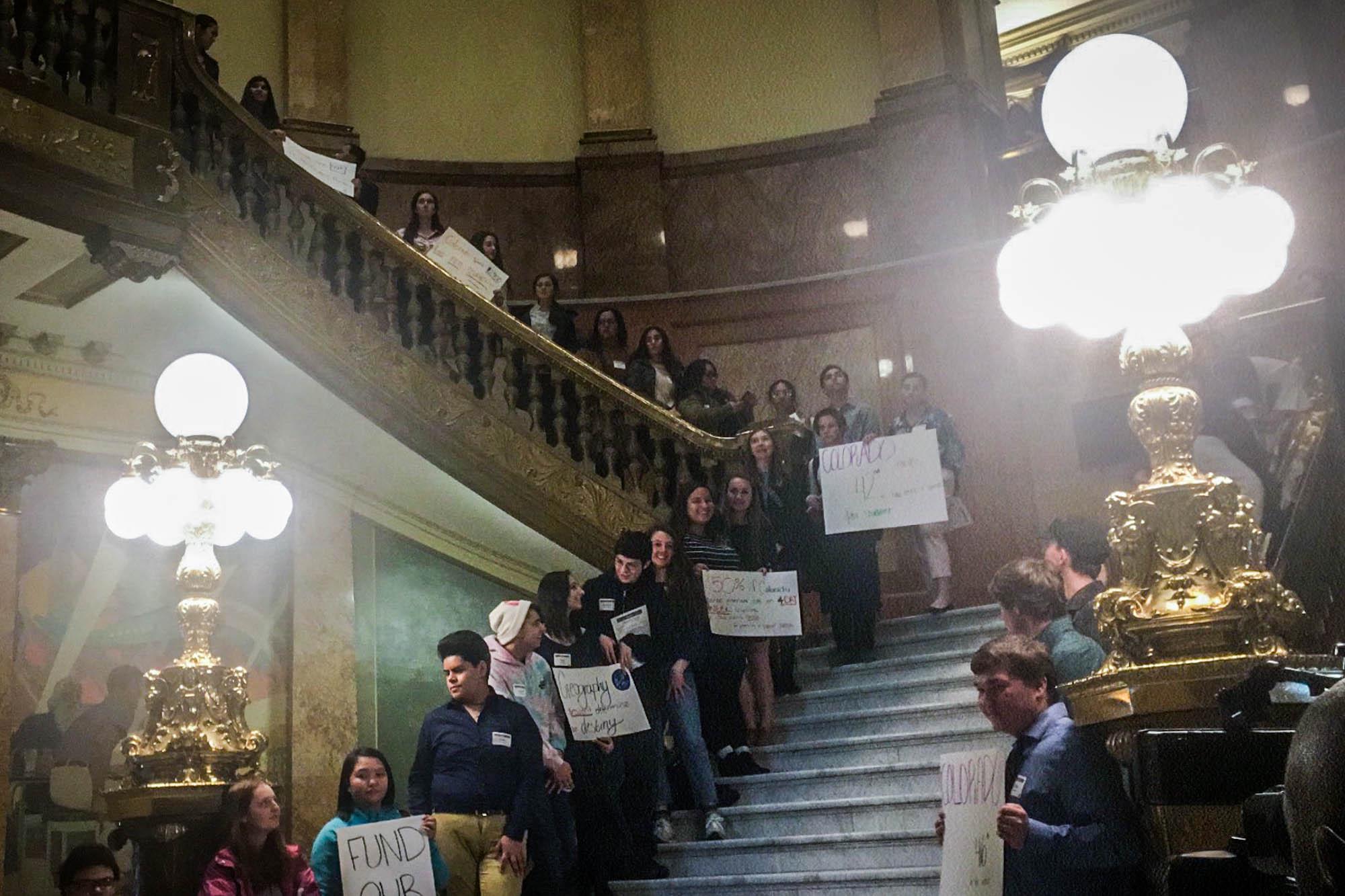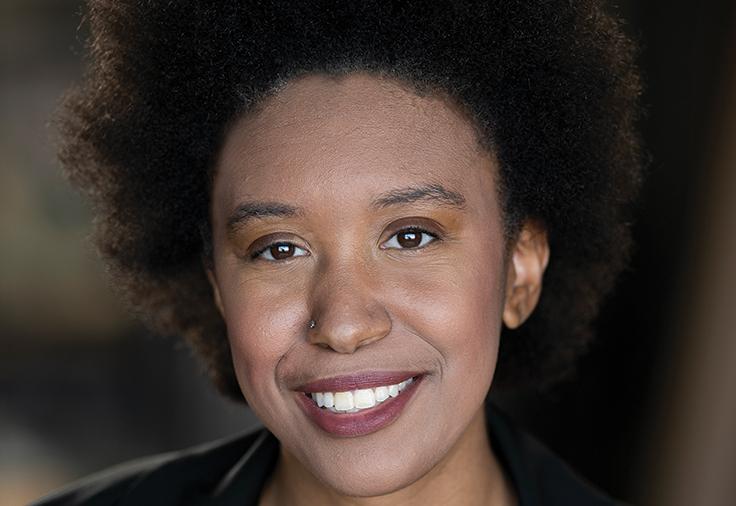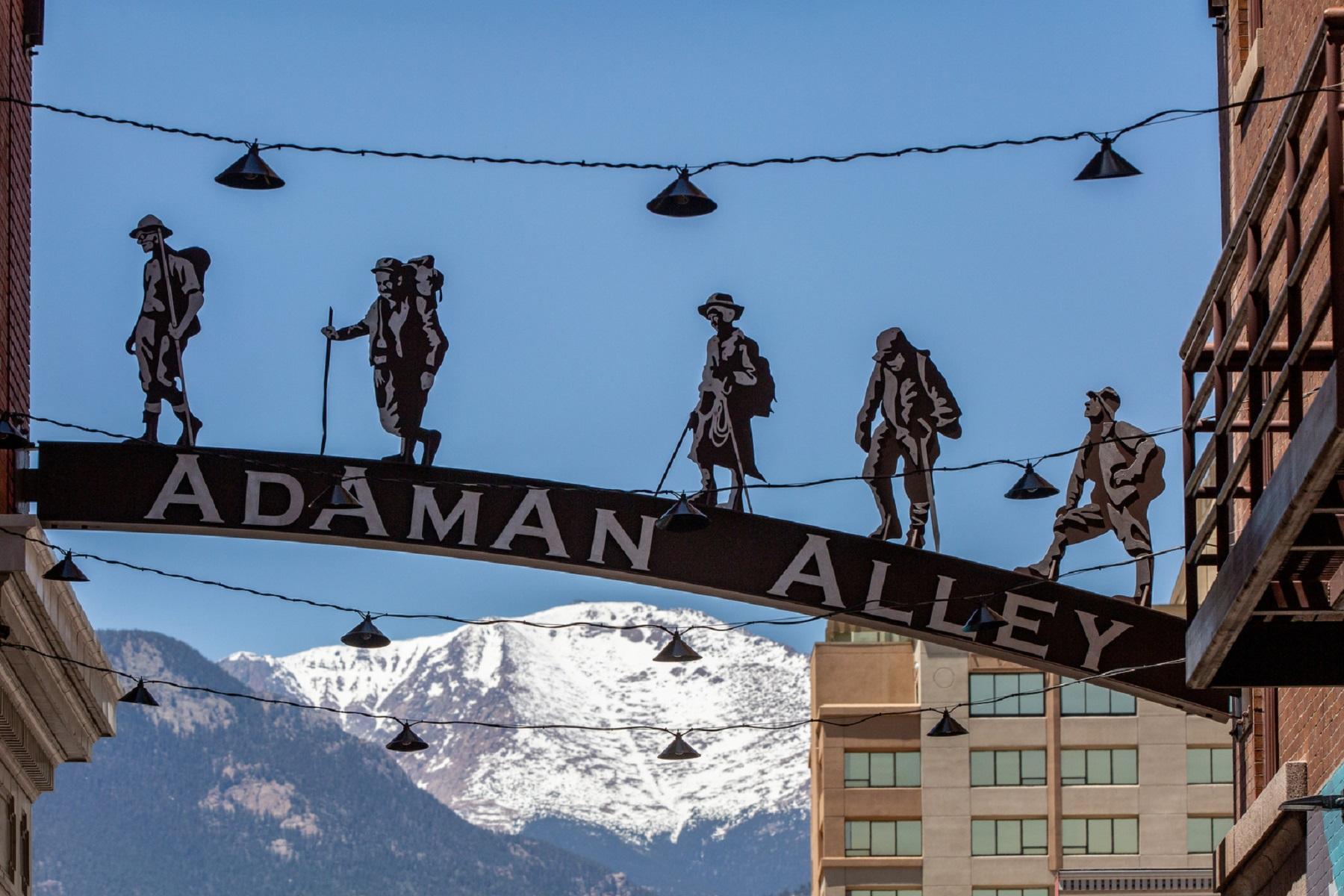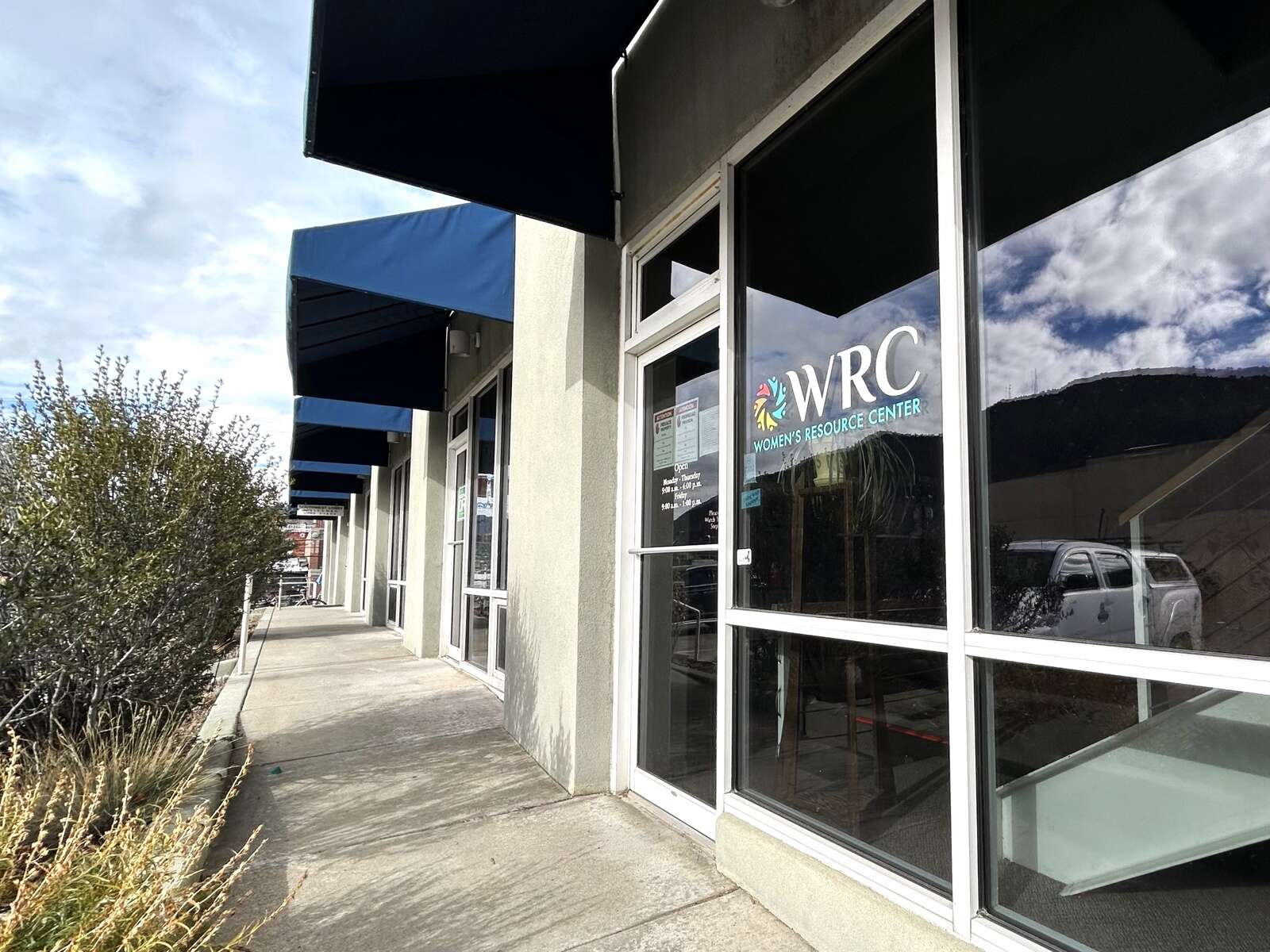
Damian Chavez, a 14-year-old wearing a pressed white dress shirt and black jeans, walked into the state Capitol building. He clutched two pieces of paper filled with talking points, prepared to lobby state legislators on something that directly impact him: school finance.
“When we were going to go on a field trip, we couldn’t because we didn’t have enough money to afford a bus,” Chavez said.
He, along with more than 100 other students across the state, participated in Lobby Day, joining many other groups who came to the Capitol to press legislators on issues. The building was full of people vying for lawmakers’ attention.
Chavez, who attends school at Empower Community High School in Aurora, passed through security. Papers still in hand, he waited for the rest of his fellow students in the main lobby.
All of them are a part of the Colorado Youth Congress, a program designed to give students a civics education. This year, the students voted to have school finance as their primary focus, a sign of how urgent they feel the problem to be.
Meanwhile, lawmakers are grappling with how to best address a state funding model that unevenly distributes resources across Colorado schools.
For decades, Colorado has struggled to make education more equitable.
The special committee tasked with reforming how funds are distributed to schools, known as the school formula, ended up not introducing any legislation earlier this year. Members of that interim committee struggled to get a consensus on the details of the bill.
The debate over Colorado’s school funding model has focused on two points: how to tweak the formula the state uses to decide how much money to give districts, and whether to put more money into the system.
Colorado ranks 47th in the nation in terms of per-student funding, and the state spends $2,700 less per student compared to the national average. Some feel that without more money in the system, tweaking the formula would just create a different set of winners and losers.
The main argument against pouring more money into education is that the state already has limited funds. It’s why there is a budget stabilization factor, a formula that reduces the amount of state total funding for each district.
The students were there to lobby primarily for a way to get more money into the system. Marina Loya, 18, goes to a charter high school in Denver and wants to pursue a career in politics. She said her school struggles to have enough quality lunches for the student body of about 400.
“I’m advocating for equality within the education system,” Loya said. “Our [state] economy is in the top 10. How is it that a state that is flourishing still does not invest money into their education?”
Colorado districts fund schools in part through property taxes, which means the relative local tax rate and value of the homes contribute to how much money the district has to spend on its own. The state is supposed to backfill the rest. This also means that some property owners contribute a share that is 16 times higher than that of other districts. For example, a homeowner in Pueblo whose home is worth $100,000 pays $193 towards education, while a homeowner in Primero pays only $12.
The students were there to lobby for a bill that was not yet introduced that would aim to even out the property tax rate across districts over time. The bill, called the Uniform Mill Levy for K-12 Education, would get every district to a certain tax level, or get to the point where a district is fully funded locally without any additional resources from the state. There will be a phase-in period so districts who are on the low-end for property taxes won’t feel the increase as abruptly.
AnnaRose Craig, 17, goes to Summit High School in Breckenridge. This was also her first time lobbying.
“I come from a more privileged area of Colorado,” Craig said. “But I think at the end of the day, I don’t really deserve a better education than anyone else just because I was born in a wealthier district.”
Under the bill as it’s written, 73 percent of Colorado’s student population would get a minimal tax increase because the district where they live is near the required minimum. The Joint Budget Committee’s interim committee debated the bill a few times, but it’s uncertain if it will appear in this year’s session. Other efforts to reform school funding have similarly been going on in the background but have yet to emerge this session.
The young lobbyists met some political hurdles.
Alishia Hess, a 17-year-old from Colorado Springs, was at the Capitol for the second time. Last year, she went to advocate for 16 and 17 year-olds to have the right to vote in their school board elections. This year, she hoped to speak to her state senator for the first time. As she stood in the busy hallway outside of the chambers, she popped her head over the sea of other lobbyists trying to find state Sen. Pete Lee.
“I’m a little nervous but I think it’ll be okay,” Hess said. “This person has so much power. This person defines how my new high school years are going to go.”
After about 30 minutes of waiting, she managed to grab the attention of one of his staffers. He told her the senator was open to the idea, but not willing to commit yet. As she turned away, he reminded Hess to pass him a fact sheet.
Afterward, she said her nerves made her forget some information, but she was at least happy he seemed receptive.
“I’m very optimistic,” she said. “He said it was undecided because he has to look at the rest of [the bill], but the facts are there for everything for them to support us.”
Craig spoke with state Sen. Bob Rankin who represents part of Breckenridge.
“He was pretty open about our ideas but he said he was torn about whether or not he wants to support,” Craig said. “With understandable reason because it would probably more negatively impact our district, his constituents. But I really think it’s important for the entire state and the less privileged districts.”
By lunch, the students were drained. They called it a day and regrouped on the street outside the Capitol. Hess felt she’d had a productive day.
“I want to see if it gets introduced, seeing what they decide to add or take away, just how they decide how to treat the way people are paying taxes in Colorado,” she said. “Just being able to talk to legislators really opened my eyes on the pros and cons of the bill that we’re trying to pass.”
If it is introduced, Hess said she’ll be ready to ask her legislator to support it.









